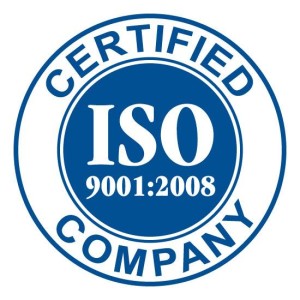The ISO Standard is going through a transitional phase where the level of new technology and business practices are expanding rapidly and this has necessitated a reaction where the standard has to adapt to the new changes and adjust its direction to ensure that it stays relevant and can be accessible to everyone who wants to be involved in the organisation’s projects. Therefore, ISO Standard has made new changes to its strategy, and has essentially coalesced the totality of the strategies into six approaches that will ensure the right future of the standard.
They call the first strategy – ISO Standards Used Everywhere. This is essentially comprised of tactics to ease the access of the ISO Standards, so that it can be comprehended by every organisation that wants to avail the benefits, without being too unintelligible and yet not losing its core quality principles that penetrate into every stage of the organisation. They’ve based this after examining the perspective of the customers, business operators, t he law regulators; it stresses coherence and clarity and leaves no room for ambiguity.
he law regulators; it stresses coherence and clarity and leaves no room for ambiguity.
The second strategy that they devised is to develop high-quality standards that take into consideration the members from various nations and the level of their involvement in making an all-purpose and highly versatile standard that satisfies every single one and national compliance in different sectors. This entails fostering regional cooperation and having an improved network among members as well as facilitating the sharing of tools and technologies. This is to ensure that the Capacity of members to develop standards that address the needs of market.
 The third strategy is to engage stakeholders into the process of standardization, so that they see the advantage in the initiative and the recognition of their respective national members inside the standard. It is an effort to seek cooperation between the members on several issues such as the national strategic priorities, language and translation needs, and regional cooperation. There is also a greater need for the stakeholders of every kind – from underrepresented groups to the global tycoons to co-operate on certain issues with clear purpose and intent.
The third strategy is to engage stakeholders into the process of standardization, so that they see the advantage in the initiative and the recognition of their respective national members inside the standard. It is an effort to seek cooperation between the members on several issues such as the national strategic priorities, language and translation needs, and regional cooperation. There is also a greater need for the stakeholders of every kind – from underrepresented groups to the global tycoons to co-operate on certain issues with clear purpose and intent.
The ISO membership is comprised of individuals from various nations and all of them are imbued with the capacity to learn research and develop adequate solutions. There is an intrinsic capacity to transfer knowledge to younger generations. The “People and Organisation development” Initiative means integrating the individual members to every strategy in the ISO canon and providing them with assistance. The individual members will benefit from the international reach of ISO and the numerous opportunities and programmes that will be initiated once the new strategy comes into effect.

Cutting-edge technology has changed the business landscapes and even the entire social playing field. Now businesses have to find alternative routes towards securing their place in the in the new world that has emerged in the wake of all the fast technological progress of the past five years. Concepts such as publishing and copyright have changed over the years, and there must be new solutions to address such indelible issues. These solutions must be robust and reflect the reality of industry trends at the same time facilitating stakeholder engagement with the members directly.
The next step is to build a  communication network between the members of the ISO and all the public and private institutions of the day. The members of the ISO Standard, in their respective, are the voice and embodiment of the standard in those nations, and a key to engaging and fostering a productive discussion between those countries. This means using the latest resources available to set up vast and extensive networks that stretch to every grassroots organisation and educate them on the benefits of standards and the various application of it in daily life.
communication network between the members of the ISO and all the public and private institutions of the day. The members of the ISO Standard, in their respective, are the voice and embodiment of the standard in those nations, and a key to engaging and fostering a productive discussion between those countries. This means using the latest resources available to set up vast and extensive networks that stretch to every grassroots organisation and educate them on the benefits of standards and the various application of it in daily life.
The Future of the ISO Standard will depend to a great extent on how people and several multi-lateral organisations come together for a greater awareness of the standard, as well the number of people willing to take part in the progress of the ISO Standard to a far reaching audience. There needs to be a wider application of the ISO Standard in more myriad industries. The strategy is to continue expanding, while creating more networks for communication, constantly change ideas and technology to suit the times.


